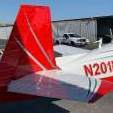510 hour engine spike in metals. Opinion needed
-
Members Online
- pkellercfii
- CL605
- Hector
- 47U
- Boštjan Fidler
- Planegary
- AF M20J
- PT20J
- Matthew P
- KSMooniac
- alexz
- midlifeflyer
- Guy123
- toto
- A64Pilot
- Electro
- TCC
- Frank B.
- Rwsavory
- eman1200
- Justin Schmidt
- Ethan
- varlajo
- Larry
- hubcap
- Jake@BevanAviation
- Bpvlbv
- ChuckSchneider
- phxcobraz
- MikeOH
- hypertech
- drstephensugiono
- Obsession2
- PeteMc
- Yooper Rocketman
- dzeleski


Recommended Posts
Join the conversation
You can post now and register later. If you have an account, sign in now to post with your account.